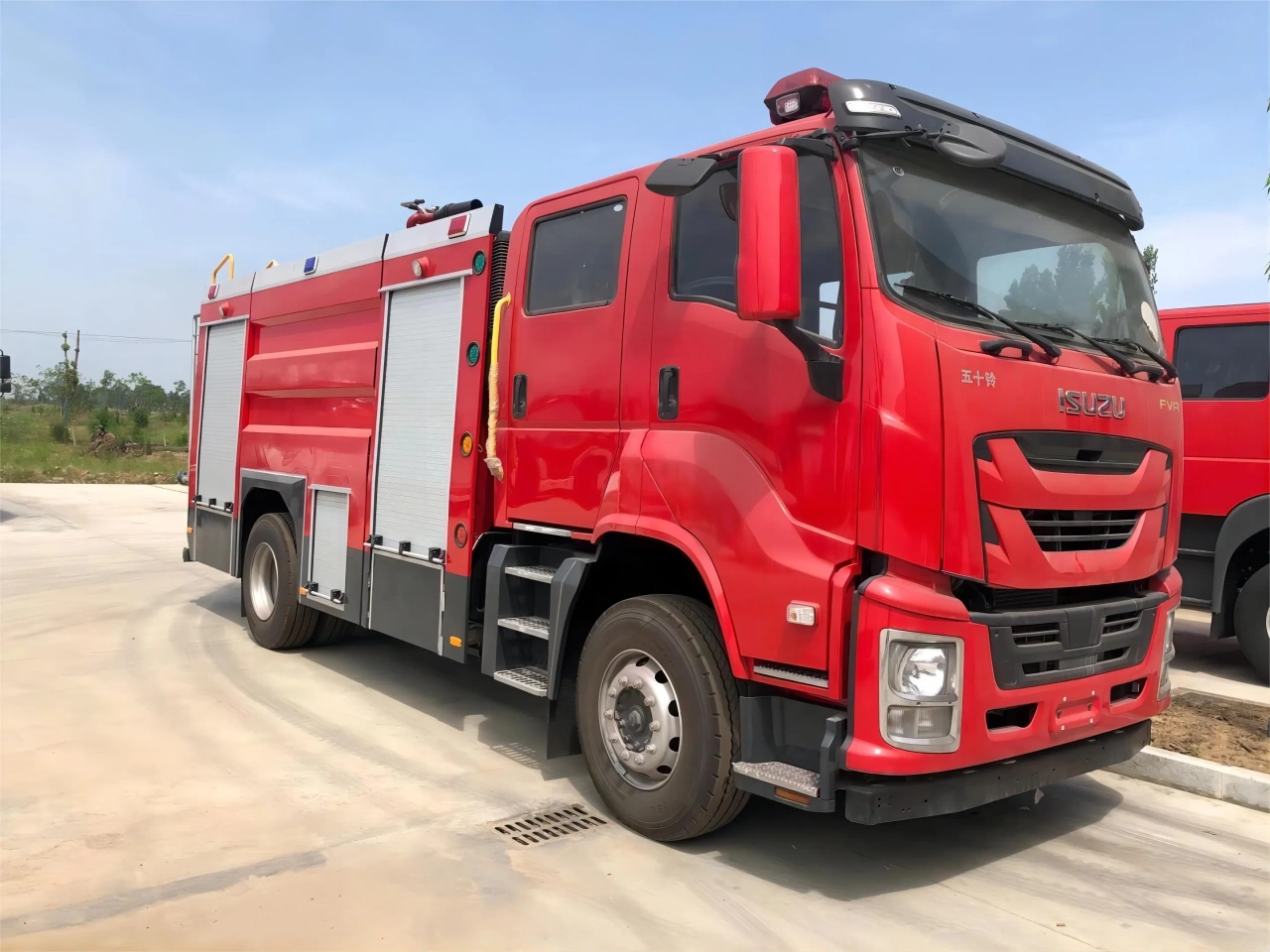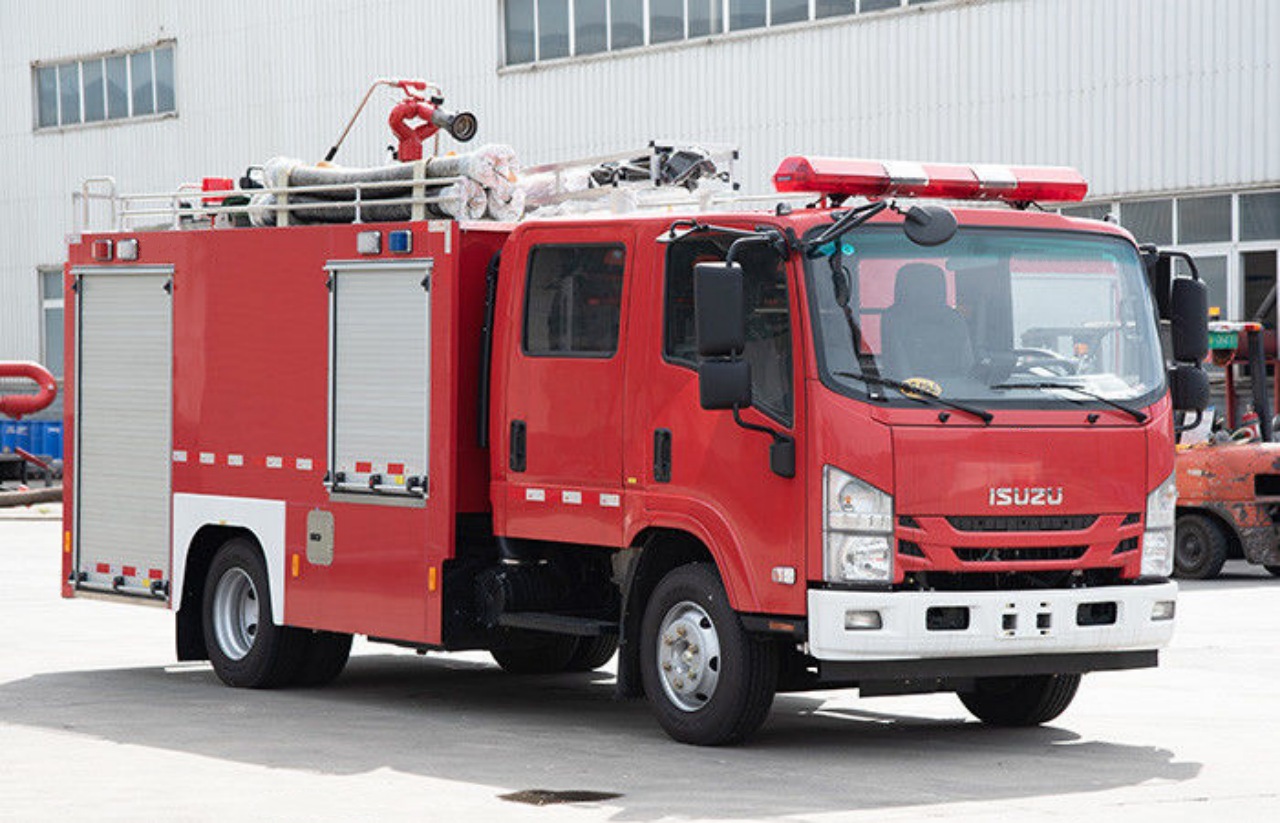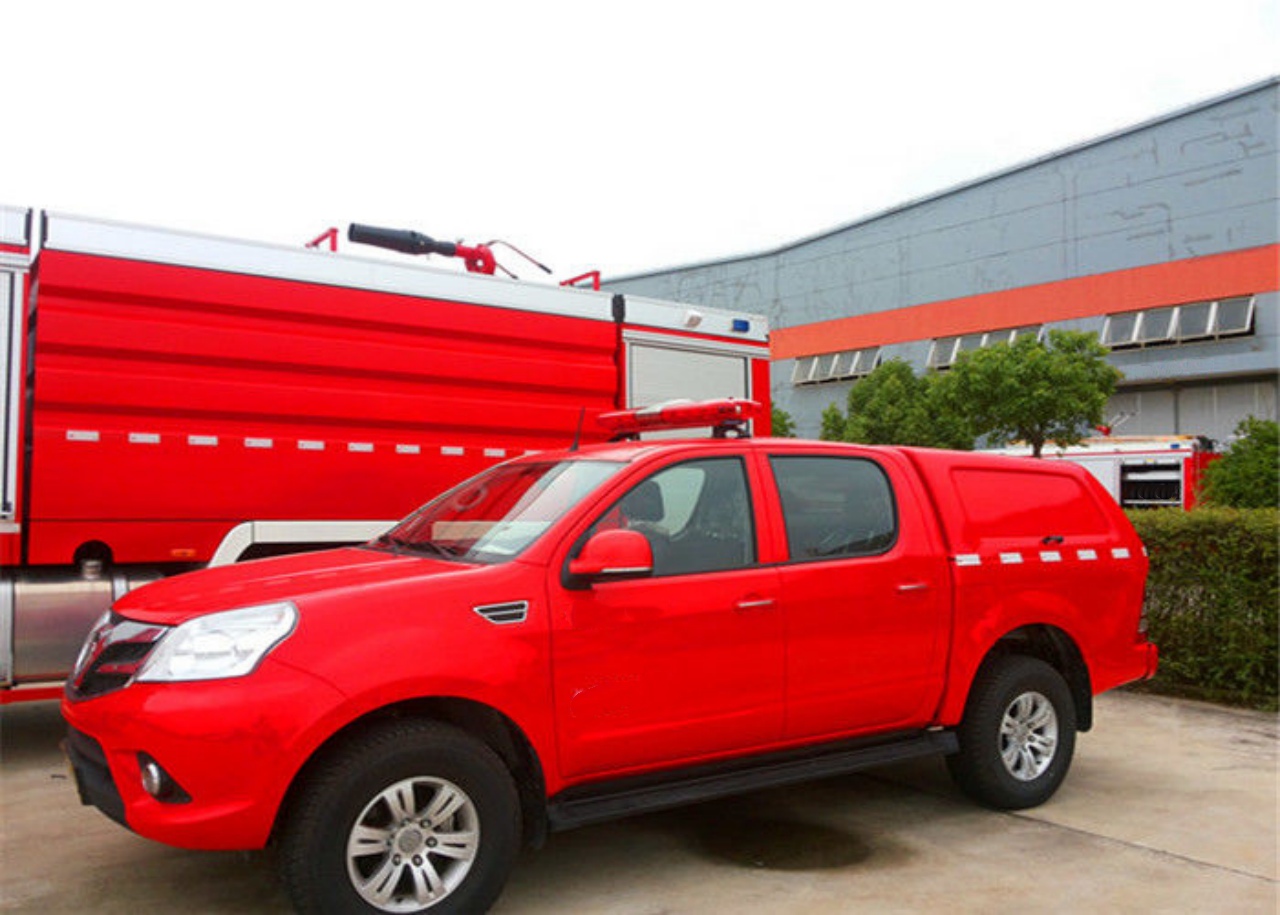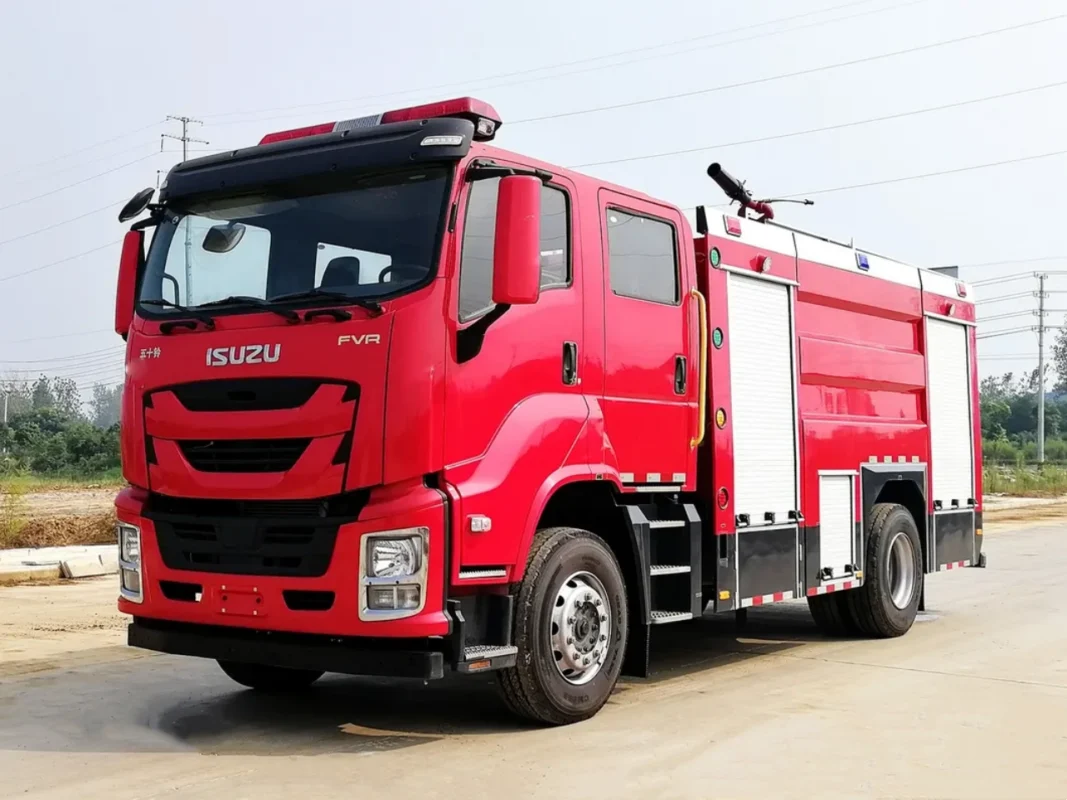Fire trucks are essential components of modern firefighting and emergency response systems. Each type of fire truck is designed with a specific purpose in mind, allowing fire departments to handle a wide range of emergencies, from structure fires and vehicle accidents to hazardous material spills and rescue operations. While there are many variations in design and equipment, certain types of fire trucks are more commonly used due to their versatility and effectiveness. This article explores the most common fire trucks, their features, and the roles they play in firefighting.
1. Pumper Trucks (Engine Trucks)
Pumper trucks, often referred to as engine trucks, are the backbone of most fire departments. These vehicles are primarily designed for firefighting operations that involve water delivery and hose deployment.
Key Features:
- A water pump, typically rated between 750 to 2000 gallons per minute (GPM)
- Onboard water tanks (usually 500 to 1,000 gallons)
- Hose storage and various types of hoses
- Connections for hydrants and external water sources
- Basic firefighting and rescue tools, such as ladders, axes, and ventilation fans
Pumper trucks respond to a wide range of emergencies, including structural fires, vehicle fires, and some medical emergencies. Their ability to quickly deploy water and personnel makes them one of the most common and versatile fire trucks on the road.

2. Ladder Trucks (Aerial Apparatus)
Ladder trucks, or aerial trucks, are equipped with an extendable ladder or platform used to access high elevations during firefighting and rescue operations. They are essential in urban environments where buildings are tall and access is challenging.
Key Features:
- Aerial ladders that extend 50 to 137 feet
- Elevated platforms or buckets (on tower ladders)
- Ground ladders of various lengths
- Stabilizers or outriggers for vehicle stability
- Tools for forcible entry, ventilation, and search and rescue
Ladder trucks are commonly used to ventilate roofs, perform high-elevation rescues, and provide elevated water streams. There are variations, including straight-stick aerials and tower ladders, each suited for specific tactical needs.
3. Rescue Trucks
Rescue trucks are dedicated to carrying specialized equipment used in technical rescue operations, such as vehicle extrications, confined space rescues, water rescues, and structural collapses. These trucks may not carry water or pumps, but are heavily stocked with tools.
Key Features:
- Hydraulic rescue tools (e.g., Jaws of Life)
- Cribbing and stabilization equipment
- Rope rescue and confined space gear
- Power saws, airbags, and lighting equipment
- Medical supplies and defibrillators
Depending on the department, rescue trucks may be known as heavy rescue or light rescue units. While not involved in direct fire suppression, they are critical to saving lives in complex emergencies.

4. Tanker Trucks (Water Tenders)
In areas where fire hydrants are not readily available, such as rural or wildland settings, tanker trucks, also known as water tenders, are essential. These vehicles are designed to transport large volumes of water to the scene of a fire.
Key Features:
- Water tanks ranging from 1,000 to over 5,000 gallons
- Quick-dump systems for rapid water unloading
- Portable water reservoirs or drop tanks
- Some may carry basic hose and pumping equipment
Tanker trucks work in tandem with pumper trucks to supply a continuous flow of water during firefighting operations in remote areas.
5. Quint Trucks
A quint truck is a hybrid vehicle that combines the features of a pumper truck and a ladder truck. The name “quint” comes from the 5 main functions the truck provides: pump, water tank, fire hose, aerial device, and ground ladders.
Key Features:
- Aerial ladder or platform
- Pump and water tank
- Hose storage
- Ground ladders
- Versatility in both firefighting and rescue roles
Quint trucks are especially useful for departments looking to maximize functionality with limited personnel or vehicle space. Their multifunctional design makes them a popular choice for suburban departments.

6. Brush Trucks (Wildland Fire Engines)
Brush trucks, or wildland fire engines, are specialized vehicles designed for fighting fires in forests, grasslands, and other rugged terrains. They are smaller and more maneuverable than urban fire engines, allowing access to off-road areas.
Key Features:
- 4×4 drive systems for off-road mobility
- Smaller water tanks (200 to 800 gallons)
- High-pressure, low-volume pumps
- Lightweight hose reels and hand tools for wildland firefighting
- Protective equipment for wildland environments
These trucks are crucial in battling wildfires and often work in conjunction with aerial firefighting units and larger tenders.
7. Command Vehicles
While not fire trucks in the traditional sense, command vehicles are an important part of fire department operations. These are usually SUVs or pickup trucks outfitted with communication systems, mapping tools, and command centers.
Key Features:
- Mobile incident command capabilities
- Radios and satellite communications
- Tactical planning equipment
- Staffed by fire officers and incident commanders
Command vehicles are used to coordinate large-scale emergencies and multi-agency responses, ensuring that resources are effectively deployed.

8. Hazmat Trucks
Hazardous materials (hazmat) trucks are equipped to handle chemical, biological, radiological, and nuclear (CBRN) incidents. These are specialized units with trained personnel and tools for dealing with dangerous substances.
Key Features:
- Detection and monitoring equipment
- Decontamination tools and suits
- Chemical containment and mitigation gear
- Reference materials for identifying substances
These trucks are less common than engine or ladder trucks, but are essential in communities with industrial facilities, highways, or chemical plants.
Conclusion
The world of fire trucks is diverse, with each vehicle type playing a critical role in protecting life and property. Among the most common are pumper trucks, ladder trucks, rescue trucks, tanker trucks, and brush trucks. Specialized vehicles like quints, command units, and hazmat trucks also serve essential functions, particularly in larger departments or unique operational environments.
The selection and deployment of fire trucks depend on many factors, including geography, population density, department size, and specific risks within a community. Understanding the capabilities of each type of fire truck helps paint a clearer picture of how fire services work behind the scenes to keep the public safe, whether fighting fires, performing rescues, or managing disasters.
As firefighting technology continues to evolve, we may see even more integration and innovation in future fire apparatus. But the core mission remains the same: saving lives and safeguarding communities.








